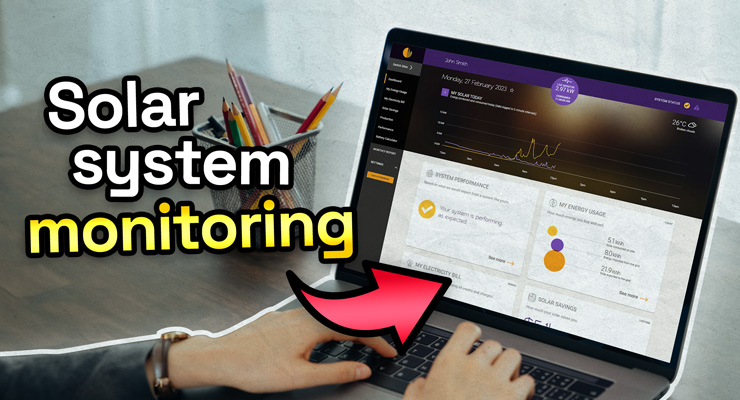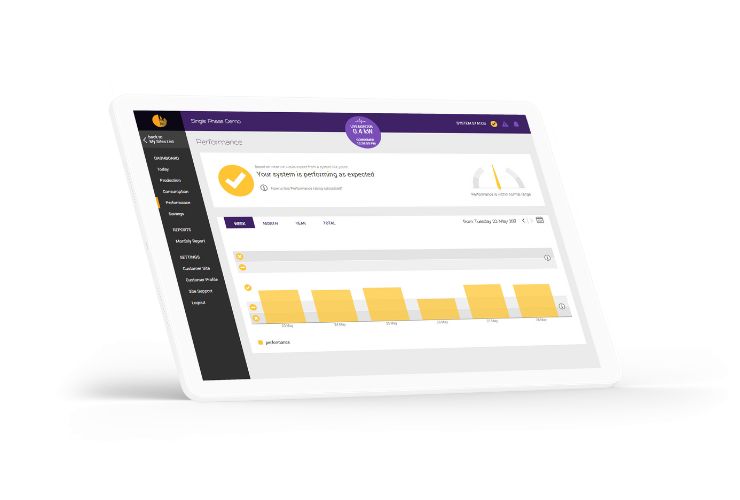
Fast read
Harnessing solar power goes beyond just installing panels; effective monitoring is crucial. Real-time insights into a solar system's performance ensure optimal energy production and consumption balance.
Modern monitoring tools offer instant feedback, alert systems for potential faults, and integration with mobile and smart home platforms. While in-built inverter solutions are common, third-party platforms like Solar Analytics provide deeper insights.
Evaluating historical data can offer trends for future performance insights, while professional services ensure thorough oversight. In essence, a well-monitored solar system maximises energy efficiency and investments, guiding us to a sustainable future.
Harnessing the power of solar – The role of monitoring solar systems
Solar power has been growing rapidly lately. Installing solar panels is great for the environment, but it’s just the start. To make the most of solar energy, it’s crucial to have a good monitoring system for solar.
Solar energy has become more popular in recent years because it’s getting cheaper and people care more about the environment. But just having solar panels isn’t enough. You need a system that can keep an eye on how well they’re working.
A good monitoring system tells you if your solar panels are doing their job properly. It helps you spot problems early, so you can fix them and get the most out of your investment. With a monitoring system, you can see if anything’s wrong with your solar panels and fix it quickly.
It also gives you useful information about how much energy your panels are making and using. This helps you make smart decisions about maintaining your system and using energy wisely.
The details of solar monitoring systems
Understanding the performance of your solar system in real-time is at the core of effective monitoring. It is not enough to merely know that your panels are producing energy; you need detailed insights into the energy ecosystem of your home.
- Energy production and total energy consumption: A top-tier monitoring solution tracks both the energy your system generates and the energy your household consumes. This dual monitoring ensures you can evaluate the efficiency of your setup and make necessary adjustments.
- Electricity flow: For homeowners connected to the grid, understanding the flow of energy is crucial. A complete system will display the amount of electricity sent to the grid and the amount bought. This will ensure clear energy billing and accurate savings calculations.
- Battery analytics: As many solar setups now include battery system storage, understanding battery charge and discharge power and its state of charge becomes pivotal. This information guarantees you’re not left in the dark during times when the sun isn’t shining.
- Alert systems: Monitoring isn’t just about performance; it’s also about system health. Alerts for solar system faults, underperformance, or inverter issues should be a standard feature. Advanced systems can even detect nuanced issues, like potential panel faults that might lead to arc faults – a precursor to sparking and potential fires.
Why real-time is the real deal
With modern technology, “waiting” is an obsolete concept. Real-time monitoring provides a dynamic view of your solar system, enabling:
- Instant feedback: Real-time updates, whether every few seconds or every five minutes, allow users to see fluctuations in production and consumption, enabling immediate adjustments.
- Immediate fault detection: If a malfunction or efficiency drop occurs, immediate alerts ensure swift action, minimising energy wastage or potential hazards.
Integrations and user experience
With the ubiquitous nature of smartphones and the rise of smart homes, solar monitoring has entered the digital age:
- Mobile apps: User-friendly interfaces on mobile platforms empower homeowners with data at their fingertips. With clear visualisations and customisable dashboards, users can assess their solar system’s performance anytime, anywhere.
- Smart home systems: By integrating solar monitoring with existing smart home platforms, homeowners can achieve greater energy efficiency. Automating certain actions, like adjusting thermostats during peak solar production, becomes feasible and efficient.

Beyond built-in solutions
While many modern inverters offer built-in monitoring capabilities, there’s a burgeoning market for specialised, third-party solutions. Platforms like Solar Analytics stand out, offering a more detailed option, performance comparisons against forecasts, and even energy market insights to potentially pivot to more cost-effective energy plans.
Historical data
Past performance is often the best predictor of future behaviour. Historical data lends invaluable insights:
- Trend analysis: Understanding how your solar system performed over seasons, or year-on-year, helps in anticipating future performance and making informed decisions about potential upgrades or maintenance.
- Environmental impact analysis: Correlating past performance with historical weather data can shed light on how environmental factors influence solar efficiency.
Professional monitor for solar systems
A professional monitor for solar systems is like having a team of experts looking out for your solar energy system. They help homeowners feel confident that everything is working as it should. These services involve skilled people who keep an eye on how the solar panels are doing and fix any problems early on.
When homeowners choose professional monitoring, they get peace of mind knowing that their solar investment is being taken care of by pros. If anything goes wrong, the monitoring team steps in quickly to solve it.
With professional monitoring, homeowners don’t have to worry about keeping track of their solar system’s performance. The team provides updates on the status of things. Homeowners can use this information to make informed decisions about energy usage and system maintenance.
In simple terms, professional monitoring services make sure that solar systems run smoothly and efficiently. They give homeowners confidence that their investment is in good hands.
In conclusion
A solar system is more than just panels on a roof. A complex setup involves panels, batteries, and monitoring devices. Monitoring is essential to ensure everything works well, catching problems early and making adjustments for better performance.
By keeping an eye on energy production, battery storage, and overall system performance, monitoring helps fix issues quickly and get the most out of the system. It’s not just about saving money—it’s also about reducing our reliance on fossil fuels and helping the environment.
In short, a monitor for your solar systems turns it into a smart and efficient setup that moves us closer to a greener future.
